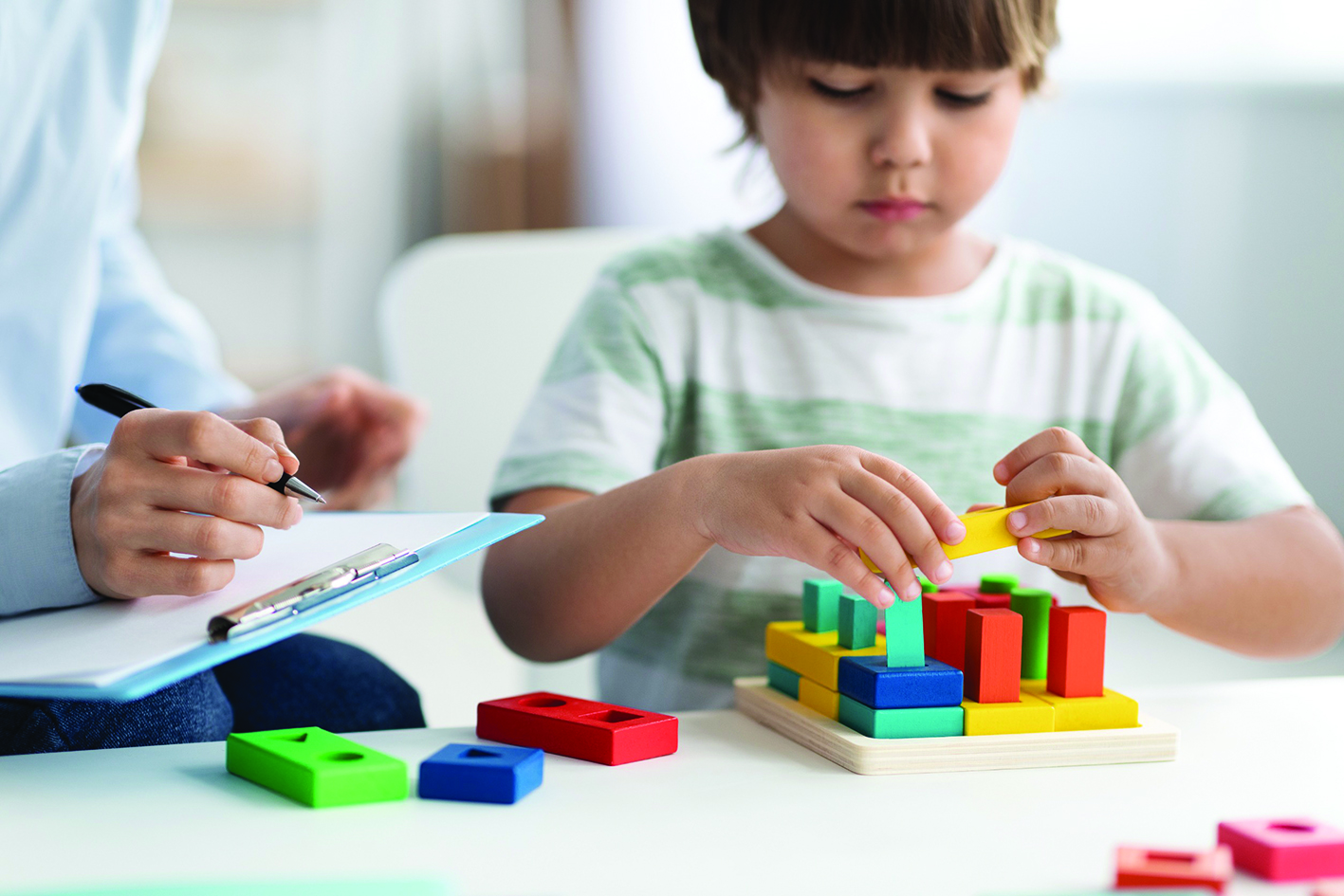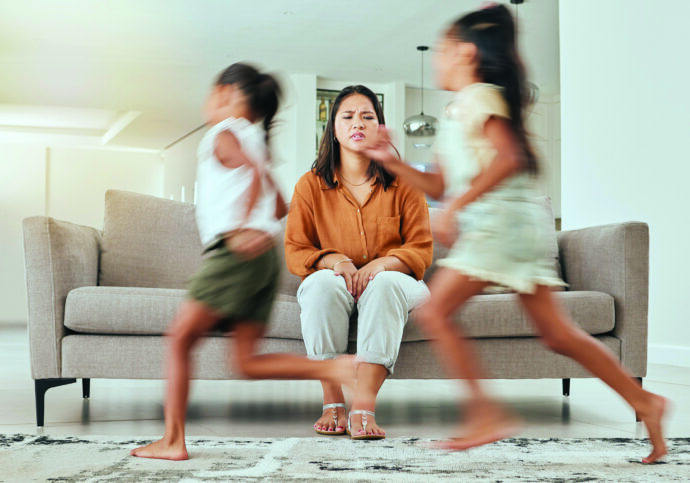Many parents might mistake their child’s sudden burst of energy for attention deficit hyperactivity disorder (ADHD), assuming it is a sign of hyperactivity. Conversely, some parents might dismiss signs of inattention and impulsivity as usual behaviour that their child will outgrow, when in reality, they unknowingly impact their child’s daily functioning and overall development.
“ADHD is one of the common neurodevelopmental disorders in children that often continues into adulthood. This condition is marked by a persistent pattern of inattention and /or hyperactive and impulsive behaviour,” says Datuk Dr. Zulkifli Ismail, chairman of the Positive Parenting Programme. “What sets it aside from typical behaviour at a specific developmental stage is that, in children with ADHD, these behaviours can be more frequent and severe.”
Despite the increasing global prevalence, ADHD is still under-recognised and under-diagnosed in most countries, especially among girls and older children. “The prevalence of this disorder varies from country to country. In Malaysia, the reported rates range from 1.6% to 4.6%. If ignored and left untreated, ADHD can interfere with your child’s interpersonal relationships and academic performance,” he adds.

ADHD diagnosis
Early recognition and management of ADHD are crucial in ensuring children and parents are able to cope with the challenges that come at every stage of the child’s development. Dr Cindy Chan Su Huay, a consultant developmental paediatrician, considers an accurate diagnosis of ADHD as the important first step before commencing any interventions. “There are three different subtypes of ADHD, and each follows strict criteria for diagnosis. If your child is hyperactive and impulsive, it does not always mean he or she has ADHD, and the same goes for an inattentive and forgetful child,” she says. Because the behaviours seen in ADHD can also be observed in typical children, it is important to recognise when the symptoms shown are excessive or developmentally inappropriate, and impact on the function of the child.
“In the first category of ADHD, which is the hyperactive and impulsive subtype, the child typically presents with symptoms such as being very fidgety, unable to sit still, frequently leaving their seat when remaining seated is expected, talking excessively, and having trouble waiting for their turn.” Dr Cindy explains that children with this type of ADHD are often described as always being “on the go” or “driven by a motor”. “Using these descriptions when speaking with parents can help them better recognise the symptoms in their child.”
On the other hand, children with the inattentive subtype usually struggle with focus and attention. “Making careless mistakes, being unable to sustain attention or follow through on instructions, always being disorganised, and avoiding tasks that require sustained mental effort are some of the symptoms commonly associated with this ADHD type,” she states. “A diagnosis of combined type ADHD is made when a child fits the criteria of both subtypes.”
Symptoms of ADHD can be noticed at an early age and will become more apparent when your child starts school. It is always a good idea to get feedback from your child’s teachers regarding how they behave in class and interact with their peers. “This is to make sure that their behavioural changes are not limited to a particular environment, whether at home or school,” says Dr Cindy.
Both biological and environmental factors can predispose a child to ADHD. “Boys are three to four times more likely to be diagnosed with this disorder than girls, and genetics plays a strong role, since children with ADHD are more likely to have a parent or sibling with the same condition,” she says. “Preterm birth, alcohol, cigarettes, and substance use during pregnancy, as well as maternal psychosocial stress, are among the environmental factors that may increase the risk of ADHD. These risks can be mitigated with careful prenatal care and lifestyle modifications.”
The diagnosis of ADHD begins with the gathering of information from multiple informants, including parents and teachers, followed by a thorough clinical examination to rule out other medical conditions. Dr Cindy explains, “A mental state examination will also be conducted to assess your child’s mental faculties, and a diagnosis will be made based on the criteria listed in the Diagnostic and Statistical Manual of Mental Disorders (DSM-5). No laboratory or imaging tests are required to confirm an ADHD diagnosis”.
She clarifies that hyperactivity is not always a sign of ADHD. “Although the diagnosis follows strict criteria, a child must exhibit at least six of them for either one or both ADHD subtypes to be diagnosed with this disorder. Moreover, physicians will consider alternative diagnoses if the same set of symptoms is not observed in more than one setting, such as at home and school, or if these symptoms do not interfere with the child’s functioning and development. It is also important to keep in mind that the symptoms and impact of ADHD change and evolve as a child grows through different age groups”.
Managing ADHD in children
To ensure targeted treatment for ADHD, Dr Norazlin Kamal Nor is of the opinion that a multi-pronged approach, adapted based on the child’s specific set of needs, should be prioritised. “The goal of treatment is to improve your child’s symptoms, functioning, learning, and self-esteem,” she says. “Early intervention increases the likelihood of the best outcomes, and since ADHD is a chronic condition, a long-term follow-up is usually required.”

The standard treatment of ADHD in children includes psychoeducation as well as non-pharmacological and pharmacological interventions. “For non-pharmacological interventions, parents can be taught to use a schedule, checklist, timer, and planner to help their child organise and plan more effectively. Other treatment options include occupational therapy for attention training and to improve executive function, along with daily physical activity to enhance focus and concentration,” she adds.
Dr Norazlin, who is a consultant developmental paediatrician, explains that medications, such as stimulants and non-stimulants, are typically reserved for cases when the ADHD symptoms are persistent and cause significant impairment in the child. “Medications should be used judiciously, with the doses carefully titrated,” she says. Parents should also monitor for potential adverse effects like insomnia, loss of appetite, and upset stomach when their child starts the regimen. “Stimulants are often prescribed in combination with non-pharmacological interventions to optimise efficacy of ADHD management.”
ADHD may coincide with other health conditions. Anxiety disorder, oppositional defiant disorder, depression, learning difficulties, and sleep problems are among commonly associated co-morbidities. “Sometimes these conditions are triggered by the frustration of coping with the symptoms of ADHD. A chronic lack of focus at school may give rise to anxiety, while constant disapproval and negative feedback from family members might lead to depression,” she explains.
In the long run, ADHD, together with the other comorbidities, can result in poor academic performance and social interactions in children. “They are also at a higher risk of developing psychological, emotional, and self-esteem issues. For example, a child with ADHD may feel less accomplished and confident compared to their peers. This will eventually affect their learning and development, leading them to withdraw from society,” Dr Norazlin says.
Ultimately, both the family and teachers play a crucial role in supporting children with ADHD and addressing any comorbidities, as well as the negative impacts they have on their academic and social lives. By collaborating with teachers, parents can ensure that efforts to help their child adapt to the world around them are continuous, extending beyond just home and school.
She adds: “That said, it must be acknowledged that raising a child with ADHD is a challenge for many parents. At times, it may seem like your child is deliberately misbehaving, when in fact, they are struggling with the skills needed to control their behaviour. Regardless, it is perfectly understandable for parents to feel frustrated or stressed while dealing with their child. As a result, staying positive and patient, as well as equipping oneself with knowledge about ADHD, will enable parents to better support their children and manage their own emotions.”
Practical tips for parents
Applying a few simple strategies can help parents effectively navigate the challenges of raising a child with ADHD while managing a busy schedule. “Parents can start by creating structure for their child through consistent routines around homework, mealtime, playtime, and bedtime. Most importantly, parents should train their child to stick with the routines every day. Tasks such as having your child lay out their clothes for the coming day or follow a bedtime ritual—like brushing teeth, changing into pyjamas, and reading a story together—can reinforce this structure,” Datuk Dr Zulkifli explains.

“Other than that, set clear rules in the house. Give your child specific instructions and explain to them the consequences of breaking the rules,” he advises. “Children with ADHD respond well to organised systems of rewards and consequences. Praise your child for appropriate behaviour and consider removing privileges as a consequence of misbehaviour. It is also important to be flexible. Children with ADHD face a lot of criticism and receive very little praise, which can hinder positive reinforcement. A little patience and encouragement can go a long way in motivating your child to learn new behaviours and help them feel confident about themselves.”
Broadly, non-medication strategies can include:
- Parent and caregiver training/coaching – many kids with ADHD also have challenging behaviours and problems regulating their emotions, it is not uncommon that this leads to exhausted parents (impact on family function) and child with low self-esteem.
- Exercise
- Classroom management – including adapted ways to give instructions, accommodations on timed tests/exams
- Social skills intervention/support
- Mindfulness training
- For older kids – cognitive behavioural therapy (CBT)
- At home – executive function coaching to develop skills for self-organisation as the child grows
In conclusion, hyperactivity in children can easily be mistaken for ADHD, leading to unnecessary worries for parents and potentially unwarranted interventions for the child. Parents should consult their child’s physicians when they notice any signs of ADHD to avoid self-diagnosis and delay in the right treatment. Raising a child with ADHD presents unique challenges, but with tailored interventions and the right support, your child will learn the right skills to thrive and reach their full potential. Over time, these skills will make it possible for them to confidently integrate into society and be an active part of it.
With:
Dr Cindy Chan Su Huay, Consultant Developmental Paediatrician
Dr Norazlin Kamal Nor, Consultant Developmental Paediatrician
Datuk Dr Zulkifli Ismail, Chairman of Positive Parenting Programme






